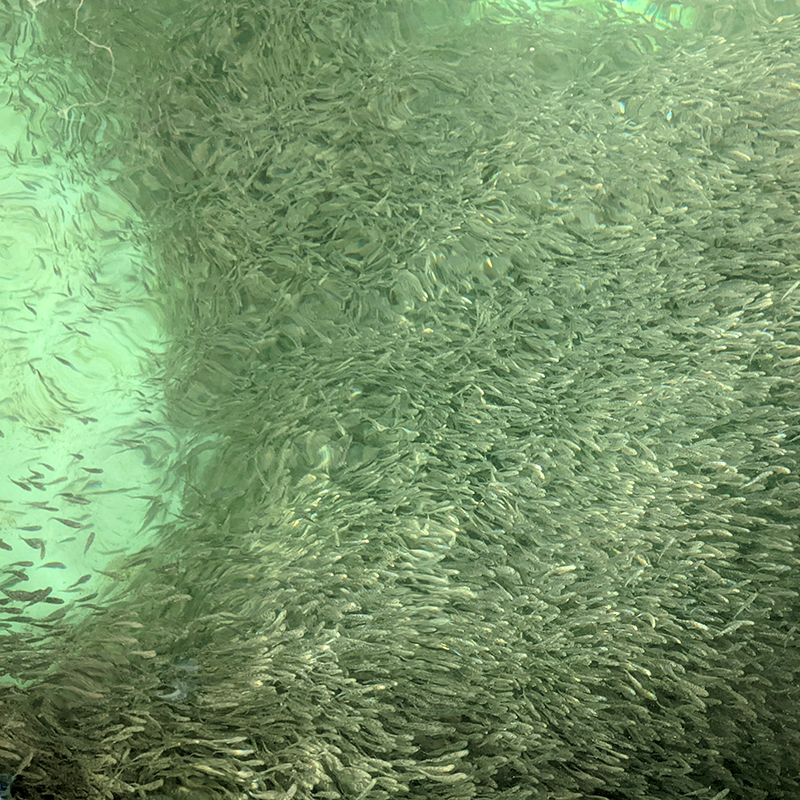 The Whitney Laboratory for Marine Bioscience
The Whitney Laboratory for Marine Bioscience

The Whitney Lab for Marine Bioscience is proposing the first restocking and conservation initiative for red drum and other fishes that integrates all life history stages, from tracking and collecting wild, breeding adults to raising their larvae for re-introduction back into our waterways. Merging advanced technologies from the fields of molecular biology, biogeochemistry, aquaculture, physiology and neuroscience, our program leverages the power of basic science to improve the health of local fisheries.
Our red drum program starts with unlocking the critical habitats for migration and breeding. Subadults and adults will be tagged with external tags and acoustic tags so that their movements can be monitored on our 15 receiver array that covers 33 miles of the inshore St. Augustine coast, along with over 1,000 receivers along the Atlantic seaboard as part of the FACT array. This acoustic array is complemented by a broad UF initiative called iCoast which has deployed devices that simultaneously measure water quality parameters such as chlorophyll levels, E. coli, nitrogen, temperature, and salinity. A subset of adults will be actively tracked.
We are also pioneering new ways to more accurately monitor the behavior of wild fish by collaborating with engineers at UF to develop special accelerometry tags and Artificial Intelligence methods. This marriage of technology, physiology and biogeochemistry will make it possible for the first time to document long-term effects of how marine fish react to anthropogenic habitat change, climate induced mangrove migration into salt marshes and other large scale disturbance effects on biota, sediment and nutrient fluxes.
Breeding red drum will be transferred to the Whitney Lab and induced to spawn under a combination of lighting and water quality conditions. Larvae will be raised using our purified seawater system. We have successfully raised 50,000 red snapper and project 100,000 red drum juveniles to be raised in the first year.
These juveniles will have two destinations. The first is release back into the wild. Before being released, they will be observed to look for behaviors and preferences to certain substrates and water quality conditions. This will help us better understand what nursery habitats are most successful. A subset of animals will be tagged (elastomer or PIT tags) so that future recapture efforts can help us estimate what portion of our tagged fish successfully recruit in the fishery (versus die in the first year due to handling, predation, etc).
The second destination is into our experimental labs, which will investigate the effects of ocean acidification, pollutants, and rising temperature on their physiology and survival. For transparent larval fish, state-of-the art imaging techniques will enable us to view the brain activity in response to stressors, enabling an unprecedented level of understanding into the sensory capabilities and physiology of a critical life-history stage. This information will be invaluable to better care and release of future cohorts.

In an effort to increase Red Drum populations in local Florida waters, the University of Florida Whitney Laboratory for Marine Bioscience released 100,000+ Red Drum (known to many as Redfish) into the waterways near and in the area of the lab on February 9, 2022. Laboratory staff, volunteers and local boat captains participated in this initiative. Read More